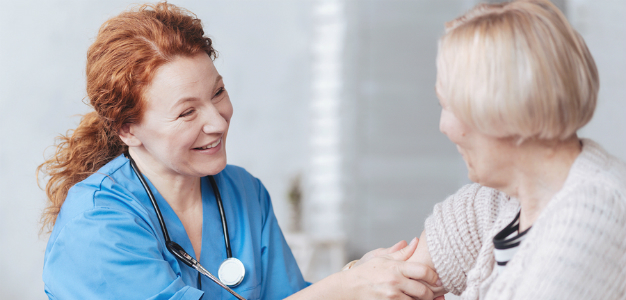Menopause, age and genes can help increase it. We can’t control those, but research points to four important things we can control.
These are weight, physical activity, alcohol and processed salt.
Obese inactive women are almost five times more likely to have high blood pressure than normal weight active women.
Stress is also likely to be a factor, especially given the importance of anxiety and depression in heart disease generally. But it doesn’t show up in the research, which looks more at the behaviours linked to stress, such as poor diet, inactivity and weight gain.
Critically, when blood pressure increases so does our risk of stroke, heart disease and dementia, the three diseases most likely to claim our lives.
But what’s ‘high blood pressure’ (or hypertension)?
The benchmark is 120/80 (120 over 80). In Australia a reading of 140/90 is regarded as high, but if you have heart disease risk factors your doctor might be keen to bring it under 120/80 with medication.
High blood pressure is usually said to have no symptoms. But world-renowned Dutch cardiologist Dr Angela Maas says there are plenty of symptoms in women if we know what to look for.
Her list includes fatigue or lack of energy, nagging pain or tightness in the chest, tightness in the jaw, pain between the shoulder blades, fluid retention, the heart skipping beats, shortness of breath climbing stairs or in a hurry, breaking into a sweat easily, insomnia, headache or difficulty lying on the left side.
While it’s easy to see how some of these could fly under the radar, it’s a reminder not to dismiss something as simple as feeling breathless.
To keep blood pressure healthy we’ll need to work towards normal weight, limit our alcohol intake, get enough sleep and relaxation, increase activity levels and build our diets around fruit and vegetables with minimal processed food.
Reading labels helps ensure we’re not inadvertently eating processed salt in foods we mightn’t suspect, such as bread or tomato sauce.
But if we can’t settle our blood pressure through lifestyle changes, we’ll need medication.
There are several types: diuretics, to help excrete excess salt and water; beta-blockers, which slow the heart and stop it from working so hard, and others such as calcium channel blockers and ACE inhibitors, which widen the blood vessels and relax the heart.
They’re often used in combination to increase effectiveness and allow lower doses of each, which helps reduce side-effects.
Women seem to experience more side-effects, such as a cough from ACE inhibitors. Both men and women can suffer a loss of sexual arousal from the reduction in blood flow that comes from taking beta-blockers.
Since few trials have focused specifically on women, we still have a lot to learn about when drug treatment should be started, which drug combinations are the most effective or what blood pressure we should aim for.
A surprisingly number of women with high blood pressure don’t take medication at all.
The Australian Institute of Health and Welfare estimates that about 30% of women aged 55-64 have uncontrolled high blood pressure, and this climbs to 48% by age 85.
Presumably that’s because they don’t know their blood pressure is high or they stop taking medication.
Angela Maas says that if we’re used to having high blood pressure it can take a few weeks to adjust to normal levels and start feeling better.
It can also take time to get the prescription right.
None of us gets excited at the prospect of taking drugs for the rest of our life, but uncontrolled high blood pressure is dangerous. The message from Angela Maas is to persevere.
Photo Source: Bigstock

